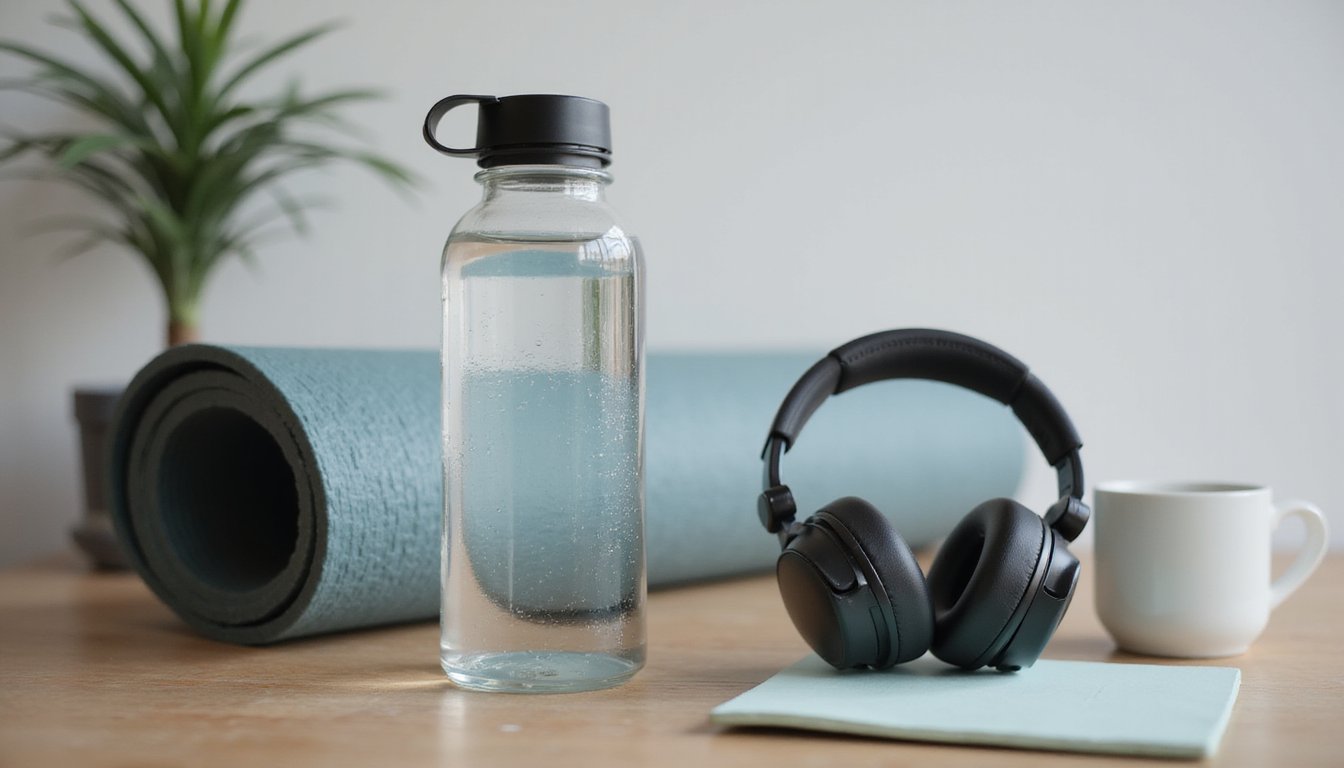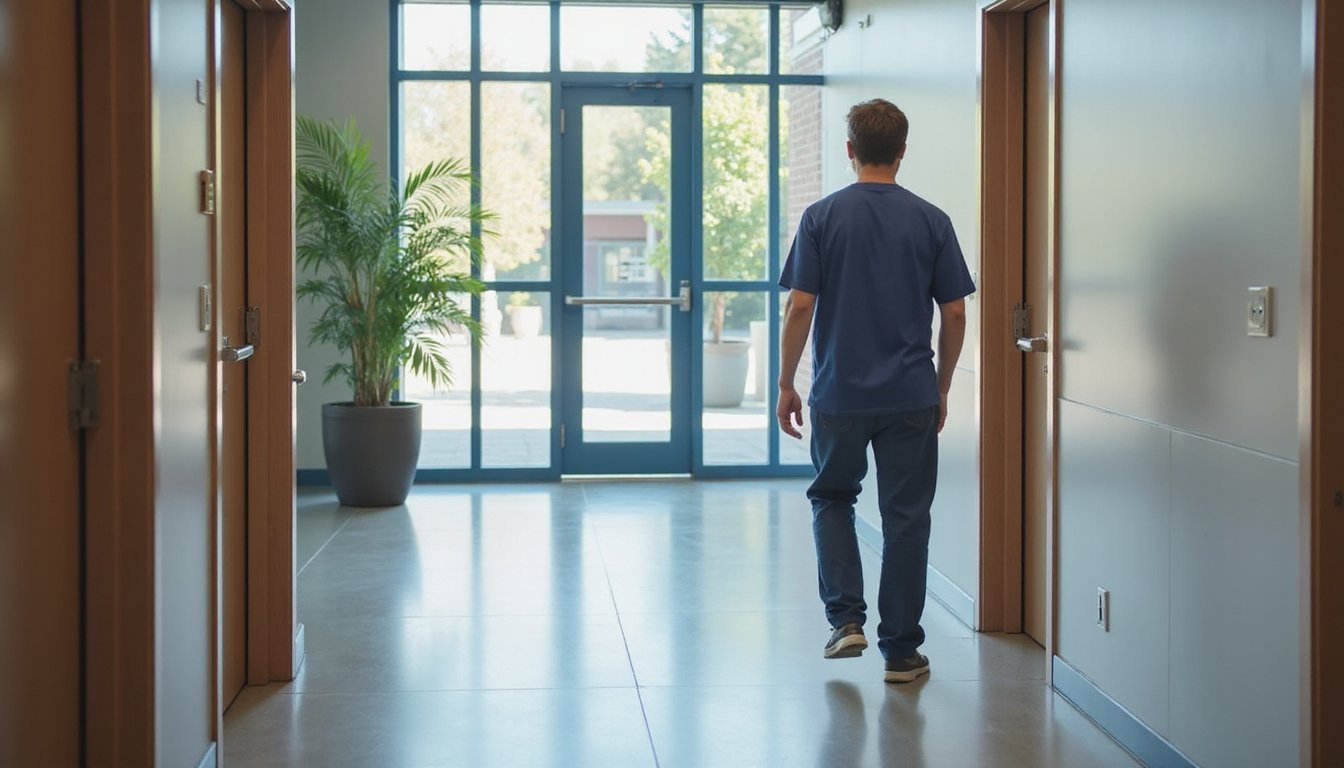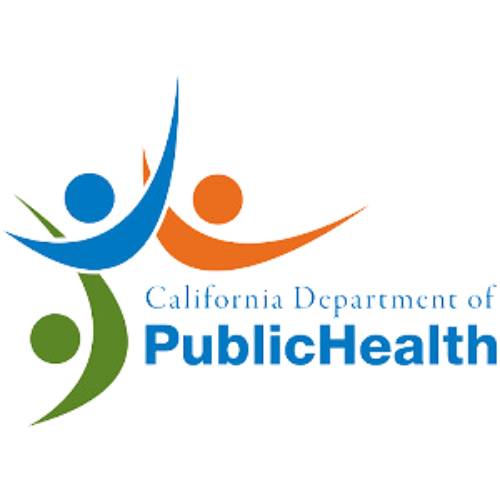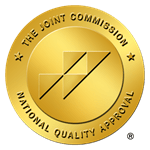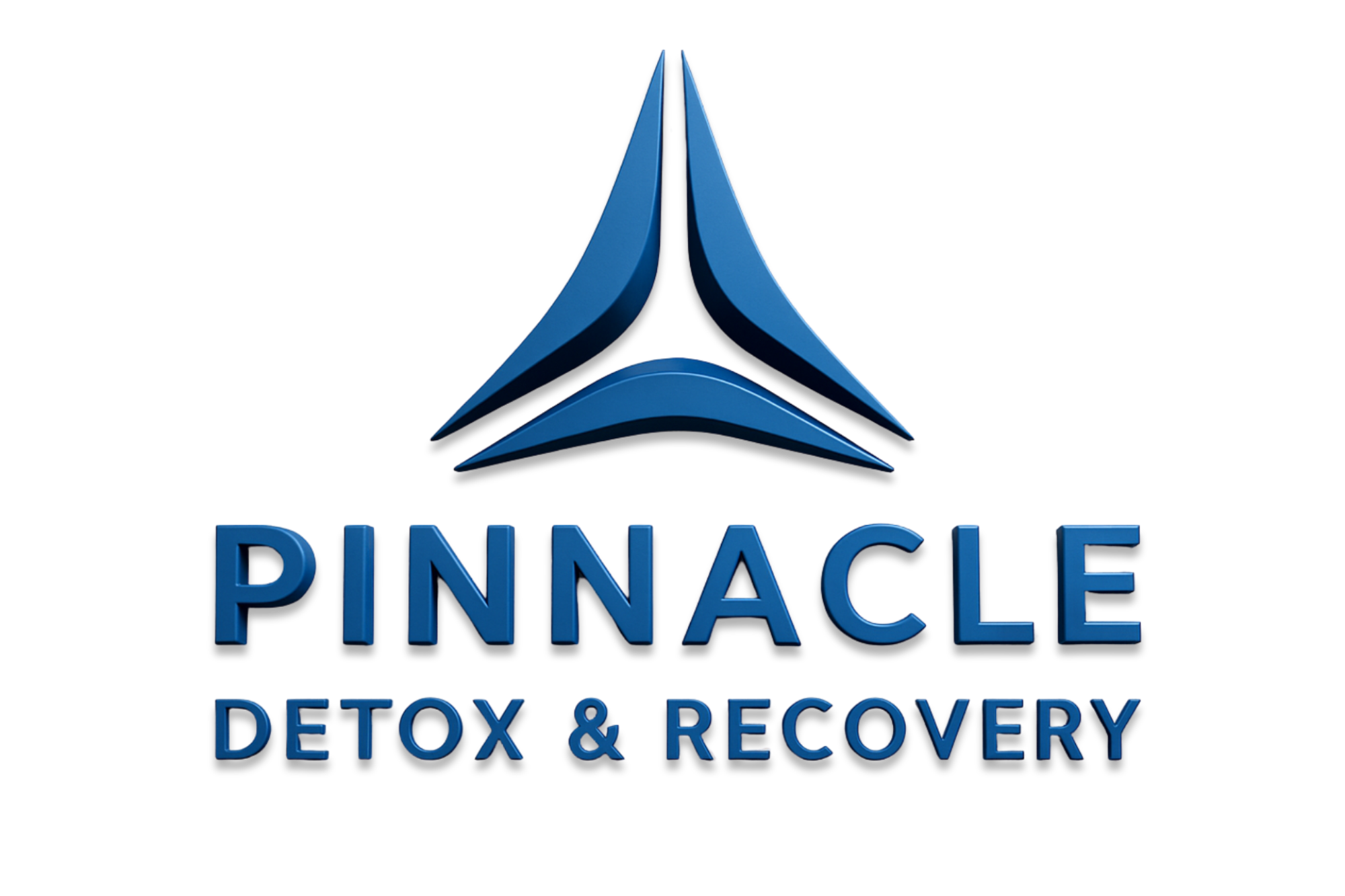Sober living homes can be right for you if you're moving from intensive treatment and need structured support before independent living. These environments increase abstinence rates from 11% to over 68% within one year through accountability, peer support, and daily routines. You'll benefit most from stays of six months or longer, which correlate with 70-85% sobriety success rates. Quality homes maintain professional oversight, regular drug testing, and appropriate occupancy levels while generating substantial healthcare and criminal justice cost savings. The sections below explore essential features and outcomes to help you make an informed decision.
What Makes Sober Living Homes Effective for Long-Term Recovery

Sober living homes create a bridge between the intensive support of residential treatment and the independence of everyday life. You'll benefit from a structured sober environment that emphasizes routine, accountability, and gradual reintegration into daily responsibilities like employment and financial management. Research shows abstinence rates climb from 11% at entry to over 68% after one year in these settings.
Peer support homes foster community among residents committed to recovery, reducing isolation, a significant relapse trigger. You'll develop essential relapse prevention & coping skills development through trigger management, emotional regulation, and boundary-setting practices. Residents must also maintain clean living spaces and attend support group meetings as part of the house rules that promote personal responsibility. Residents often take on leadership positions and decision-making responsibilities within the house, which empowers them and strengthens their commitment to recovery principles. Success in sober living extends beyond maintaining sobriety to include rebuilding relationships, securing employment, and establishing healthy daily routines that support long-term stability. Oxford House participants demonstrate double the continuous abstinence rates at two years compared to standard aftercare (66% vs. 31%), with 63% reduced odds of substance use recurrence through sustained peer accountability and recovery-oriented social networks.
Essential Features That Define Quality Sober Living Environments
Quality sober living environments share specific characteristics that directly impact your recovery success. Research shows that homes with professional oversight, appropriate resident-to-staff ratios, and clear accountability structures produce measurably better long-term outcomes. Understanding these essential features helps you identify supportive environments that will strengthen your passage from treatment to independent living. Effective programs incorporate regular drug and alcohol testing alongside weekly house meetings to maintain accountability and support your commitment to sobriety. Look for facilities with NARR certification, which ensures the home follows strict ethical guidelines and maintains appropriate physical conditions for residents. The most effective facilities maintain occupancy rates between 80-90%, which creates a balanced community that provides both personalized support and the financial stability necessary for consistent operations.
Optimal Size and Occupancy
One of the most critical yet overlooked factors in selecting a sober living home is its size and occupancy rate. When evaluating recovery housing options, you'll find that optimal occupancy, typically between 80–90%, creates the balance necessary for effective transitional living. This range guarantees you'll have enough peer support without overcrowding, which can strain resources and compromise your recovery environment.
Consider these evidence-based indicators of appropriate sizing:
- California's average of 5.6 beds per home reflects practical capacity that supports community while maintaining individual attention
- Occupancy below 80% may limit peer interaction essential for accountability and shared recovery experiences
- Homes exceeding capacity often face compliance issues and diminished recovery outcomes
Research indicates that residents living in houses with large numbers of residents tend to experience worse outcomes, suggesting that smaller, more intimate recovery environments may better support your path to sustained sobriety. However, well-designed larger homes with intentional communal spaces can foster stronger peer support and sense of belonging when capacity is properly managed. Quality sober living after rehab depends on finding facilities that balance community engagement with sustainable operations and individualized support. In addition, facilities that prioritize open communication and structured activities can significantly enhance the experience of those transitioning after rehabilitation.
Professional On-Site Management
Beyond the physical capacity of a facility, effective oversight ascertains whether residents receive the structured support necessary for sustainable recovery. Professional house managers maintain drug-free, safe environments through regular inspections, crisis protocols, and adherence to NARR Level 3 standards. They consistently enforce written guidelines while managing financial operations, maintenance coordination, and facility logistics.
Managers provide emotional support through active listening and conflict mediation, facilitating group meetings that promote open dialogue and collective problem-solving. They connect you to treatment providers, support groups, and community resources through personalized check-ins and progress monitoring. Strong communication skills, organizational abilities, and motivational interviewing techniques enable managers to handle complex household dynamics while supporting your independence. Their protocol-driven relapse response plans guarantee immediate, safety-focused action when needed. House managers keep meticulous records of resident activities, medical appointments, and participation in treatment programs to ensure continuity of care. Quality managers demonstrate the ability to handle multiple responsibilities simultaneously while maintaining a calm and professional demeanor throughout daily operations. Drawing on personal addiction treatment experience, many house managers serve as authentic role models who understand the challenges of recovery firsthand.
Structured Programs and Accountability
When you're traversing early recovery, structure isn't a limitation, it's a safeguard that reinforces the behavioral patterns necessary for long-term sobriety. Quality sober living homes implement mandatory drug testing, enforced curfews, and attendance requirements at group meetings to maintain accountability and reduce relapse risks. These clear written policies aren't punitive, they're protective measures that foster discipline while building real-world life skills.
Effective accountability systems include:
- Regular house meetings that facilitate open communication, conflict resolution, and peer cohesion
- Buddy systems pairing residents for mutual support, daily check-ins, and early intervention
- Shared responsibilities like chores and meal planning that cultivate teamwork and practical independence
Curfews establish distance from environments previously associated with substance use while promoting the rest and regular sleep schedules essential for physical and emotional healing. The peer network creates a foundation where individual resolve strengthens through collective commitment to sobriety and shared recovery goals. Because addiction alters brain chemistry, establishing new healthy habits requires external accountability during early recovery when internal motivation may be unreliable. Through frequent evaluations, constructive feedback, and stepwise progression plans, you'll gradually internalize self-accountability while preparing for autonomous living beyond the structured environment.
How Long Should You Stay in a Sober Living Home
Determining the right length of stay in a sober living home depends on individual circumstances, but research consistently points to a clear benchmark: residents who remain for at least six months experience markedly better recovery outcomes. This threshold represents the minimum effective duration, with studies showing 7.8% more abstinent days and significantly reduced substance use disorder risk compared to shorter stays.
Extended residence yields even stronger results, 6 to 12 months correlates with 70-80% sobriety success rates, while stays exceeding one year reach 85% or higher. Your ideal duration depends on factors including co-occurring disorders, employment stability, and treatment goal completion. The six-month period serves as a turning point where recovery-supportive habits and connections gradually replace the destructive patterns that preceded treatment. Homes with structured support and regular progress assessments help determine your readiness for independent living, ensuring you've built sufficient recovery capital before moving out.
The Role of Peer Support and Community in Maintaining Sobriety

Peer support transforms recovery from an isolated struggle into a shared journey with measurable clinical benefits. When you engage with others who understand your challenges, you're considerably more likely to maintain sobriety, research shows relapse rates drop from 24% to just 7% over six months with peer involvement. These connections provide practical accountability and emotional reinforcement that professional treatment alone can't replicate. These relationships not only help in sobriety but also in developing effective life after rehab strategies to handle everyday challenges. Participants often share insights that lead to new coping mechanisms and long-term goals, making the recovery process more sustainable. Additionally, these peer interactions can enhance the development of relapse prevention strategies after rehab, ensuring individuals are better equipped to face triggers and stressful situations.
Peer support reduces six-month relapse rates from 24% to just 7% while providing accountability that professional treatment alone cannot match.
Peer communities offer distinct advantages:
- Reduced relapse risk: Participants in peer support programs demonstrate sustained abstinence rates that outperform standard treatment approaches
- Enhanced motivation: Shared experiences decrease feelings of guilt and shame while increasing self-efficacy and quality of life
- Better treatment engagement: You'll attend more outpatient appointments and maintain stronger connections with healthcare providers
For marginalized populations and those with co-occurring mental health conditions, peer support proves especially effective.
Financial Benefits and Cost Savings of Sober Living Arrangements
Choosing sober living isn't just about recovery, it's a financially sound decision that can reduce your overall costs while supporting long-term stability. Research shows these arrangements generate substantial savings through decreased healthcare expenses, fewer emergency interventions, and reduced involvement with the criminal justice system. You'll also benefit from improved employment outcomes and higher earnings potential, making sober living a practical investment in both your health and financial future.
Reduced Healthcare and Emergency Costs
When you choose recovery housing after treatment, you're not only supporting your sobriety, you're also reducing the likelihood of costly medical emergencies down the road. Research shows that sober living residents experience fewer emergency room visits, overdoses, and crisis hospitalizations compared to those without stable recovery housing. National estimates indicate that avoided healthcare costs alone account for approximately 6% of total recovery housing benefits, with studies documenting net savings of around $29,000 per resident.
Key healthcare cost reductions include:
- Fewer emergency interventions: Decreased detoxifications, unplanned hospitalizations, and overdose-related acute care
- Lower overall medical utilization: Reduced relapse rates lead to fewer ongoing outpatient and inpatient treatment needs
- Prompt intervention: Routine monitoring in sober living prevents expensive downstream complications before they escalate
Employment Gains and Earnings
Beyond the immediate safety and stability that sober living provides, one of its most transformative benefits is the pathway to meaningful employment and financial independence. Research consistently shows that residents achieve higher employment rates, with longer stays of 6–12 months correlating with sustained job retention and lower relapse. Smaller homes with structured accountability, like mandatory recovery meetings, demonstrate the strongest outcomes. You'll also gain access to vocational training, job placement support, and financial planning resources that directly boost your earning potential. Shared housing costs make these environments more affordable than independent living, while peer accountability helps you maintain steady work. The combination of structure, community support, and practical skill-building creates conditions where employment success becomes achievable and sustainable.
Lower Criminal Justice Expenses
The financial impact of sober living extends far beyond individual households, it delivers substantial savings to criminal justice systems nationwide. Oxford House participants experienced incarceration rates two-thirds lower than traditional aftercare (3% vs. 9%), producing an estimated $23,812 saved per person over six months. You're part of a recovery model that reduces arrests, court proceedings, and prison costs while generating net societal benefits averaging $29,000 per person during two years.
Key cost-effectiveness findings include:
- Recovery housing participants reported fewer days engaged in illegal activity, saving $754.93 per day avoided
- Program benefits far outweigh operating costs, with criminal justice savings eclipsing residential expenses
- States redirect funds from decreased incarceration toward treatment, prevention, and housing initiatives
These outcomes demonstrate that sober living arrangements offer financially sustainable alternatives to costly incarceration-treatment cycles.
Key Factors to Consider Before Choosing a Sober Living Home
Choosing a sober living home requires careful evaluation of several interconnected factors that directly influence your recovery trajectory and daily quality of life. Location matters, proximity to employment, outpatient treatment, and public transportation supports your reintegration while a safe neighborhood minimizes relapse triggers. Structure and accountability, including mandatory drug screening, curfews, and house meetings, reinforce stability and life skills. Staff supervision enhances safety, with trained personnel providing crisis management and health referrals.
| Factor | Why It Matters |
|---|---|
| Location & Safety | Reduces triggers; supports employment and treatment access |
| Rules & Accountability | Enforces sobriety; builds responsibility through chores and curfews |
| Peer Support | Fosters motivation; demographics should align with your needs |
Consider cost transparency, accreditation, and peer demographics to guarantee the environment aligns with your recovery goals.
Measuring Success: What Outcomes Can You Expect From Sober Living

When you're evaluating whether sober living is right for you, understanding measurable outcomes helps set realistic expectations and reinforces your commitment. Research shows abstinence rates climb from 11% at entry to 68% at six and twelve months, demonstrating significant progress. Staying six months or longer is a pivotal turning point, you'll gain 7.8% more abstinent days compared to shorter stays.
Beyond sobriety, you can expect:
- Employment improvements up to 45% within your first year, particularly in smaller homes with ten or fewer residents
- Sharp declines in arrests and legal issues after six months of residence
- Stronger social support networks through mandatory peer accountability and 12-step participation, which predict better long-term outcomes
Length of stay directly correlates with sustained success across all recovery dimensions.
Frequently Asked Questions
Can I Keep My Job While Living in a Sober Home?
Yes, you can typically keep your job while living in a sober home, in fact, it's strongly encouraged. Employment supports your recovery by building routine, financial independence, and accountability. You'll need to coordinate your work schedule with house rules like curfews and mandatory meetings, so communicate with staff early. Most homes accommodate standard work hours well. However, jobs with irregular shifts or those in high-risk environments may require discussion to guarantee they don't conflict with your recovery commitments.
Are Family Visits Allowed at Sober Living Homes?
Yes, most sober living homes allow family visits, but they require advance approval and scheduling with staff. You'll need to follow specific visiting hours, submit guest names beforehand, and guarantee visitors arrive sober and respect house rules. Visits typically occur in common areas, not private rooms. Early-phase residents may face temporary restrictions. These structured visits provide emotional support and strengthen your recovery while maintaining the home's safe, substance-free environment.
What Happens if I Relapse While in a Sober Living Home?
If you relapse while in a sober living home, you'll likely face immediate consequences based on the house's specific policies. Most homes will ask you to leave temporarily to protect the community's recovery environment. However, this isn't necessarily the end, many facilities offer reentry after you've completed additional treatment, passed screenings, and demonstrated renewed commitment. You'll typically receive referrals to appropriate care, and with proper support, you can still achieve long-term recovery.
Do Sober Living Homes Accept Insurance or Medicaid Coverage?
Most insurance plans and Medicaid do not cover sober living home rent, as these environments aren't classified as formal medical treatment. However, some policies may cover clinical services like therapy or case management, provided within the home. Coverage varies considerably by state and plan. You'll likely need to self-pay, with costs averaging $1,500–$2,000 monthly. It is crucial to verify your specific policy details and explore sliding-scale fees or scholarships if cost is a concern.
Can I Bring My Pet to a Sober Living Home?
Whether you can bring your pet depends on the specific sober living home's policies. Many facilities allow pets, typically dogs or cats, but require proof of vaccinations, spay/neuter status, and good behavior. You'll likely pay a deposit ($200–$500) and monthly pet rent ($25–$100). Pets can provide emotional support, reduce loneliness, and foster routine during recovery. However, some homes prohibit animals due to allergies or community concerns, so confirm policies before committing.
